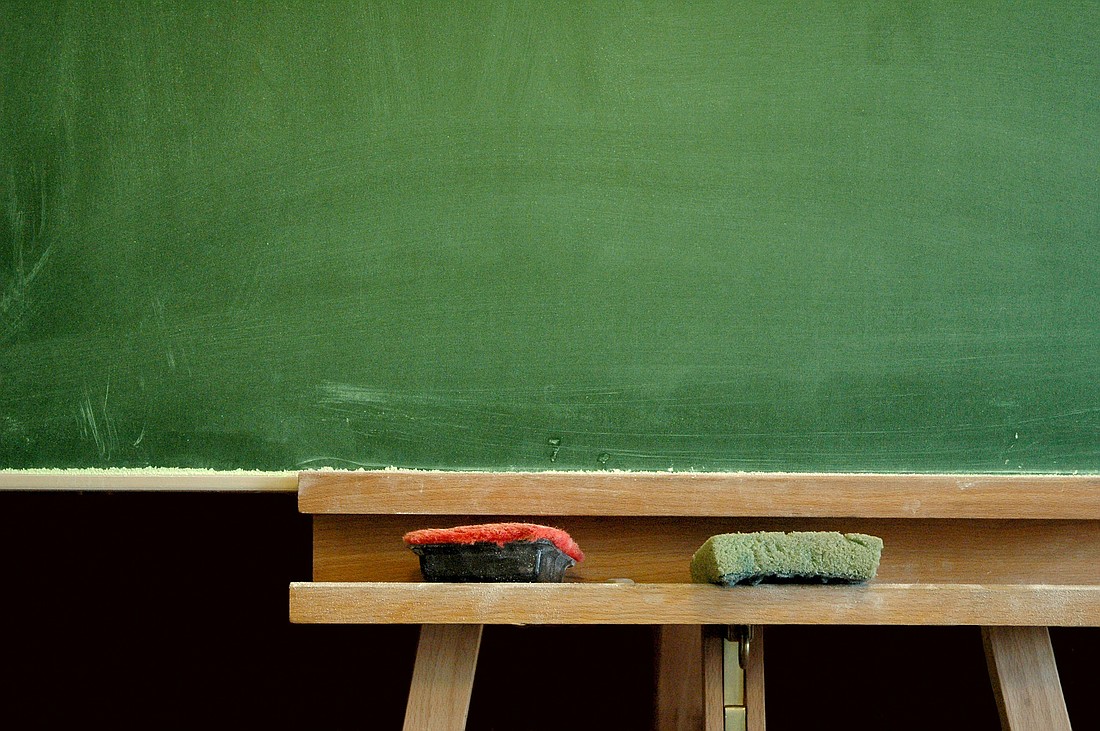- April 25, 2024
-
-
Loading

Loading

High school students are going high-tech this year: By Christmas, they will all have their own laptops.
The school district plans to enter a lease agreement with Apple to obtain 3,900 MacBook Air laptops for high school students, which will be distributed weekly as soon as school starts.
Then, the technology high schools currently have will be shifted down to middle and elementary schools. The district plans to have a 1:1 ratio of technological devices to students in grades five and up by the end of the school year, the first step in a five-year plan to extend that ratio to all students.
In the first year, the lease-to-purchase plan for the machines will cost $814,130. For the following four years, the district will spend about that amount in technology acquisitions, for a total of $5.3 million over five years.
The plan is a “silver lining in a very dark cloud,” said School Board member Colleen Conklin during a board workshop meeting Thursday.
During the first half of that workshop, the board continued an ongoing discussion about the tangible impacts of a string of recent cuts made to balance the district’s budget. Those cuts ranged from fewer supplies to fewer academic programs. In May, the board opted to close Everest Alternative School and eliminate six paraprofessional positions to save. money.
However, the computers will be purchased using revenue from the half-penny sales tax approved by voters last year, which can only be used to purchase technology, to build or maintain school buildings or to acquire land. The board could not legally use revenue from that tax to save some of the programs that have been cut.
“We’re following the commitment we made to voters when they passed the tax,” said Ryan Deising, technology director for the district.
By 2018, all students in grades four and above will have their own iPad tablets, and younger students will have access to technology carts equipped with enough devices for all students. The technology push mirrors a statewide effort to make all instructional material digital by 2015.
The district originally planned to purchase iPads for all of its students, not laptops, but iPads cannot yet handle all the functions needed, Deising said. He anticipates that by 2018, when the district plans to be using iPads exclusively, the devices will have evolved enough for the schools’ needs. However, there is time to adjust the plan if necessary, he said.
District staff is still working out all of the details of the technology initiative. For example, they may allow students to purchase their laptops when they graduate, which would generate some return on the money spent as the district transitions to iPads.
Conklin asked that the board launch a public education initiative to explain why half-penny dollars cannot be spent the way revenue in the district’s heavily cut general fund can be.
“We also need to tell the public that this is the way of the 21st century,” Conklin said. “It’s just as important as pen and paper.”
The tax generated about $4.2 million last year, and is expected to bring in about $4.4 million this year. In a proposal presented by Deising, most of that revenue was consumed by technology costs. In addition to the lease prices of the devices, technology costs include staffing, network support and telecommunications.
But half-penny revenues were not just meant to fund technology initiatives.
“We did put forth some other initiatives that would be covered by the half-penny, and I want to make sure we do that,” said board member Andy Dance. “As a part of moving forward, we need to have a strategic look at the entire half-penny initiative, and not just the technology.”
Superintendent Janet Valentine said the proposed plan leaves sufficient room for all projects. Although it accounts for most of the half-penny revenue, the technology proposal does not consume all of it, Valentine said, and technology money spent on things like staffing frees up money in the district's capital budget, allowing more dollars to be spent on building maintenance and other things.
"We didn't just come in and take all the half-penny money," Deising said.
The lease agreement with Apple will come before the School Board at an upcoming meeting for approval.
“I’m happy to support this,” School Board member Sue Dickinson said. “We put it on the referendum for a vote, citizens voted for it, and now we’re doing it.”